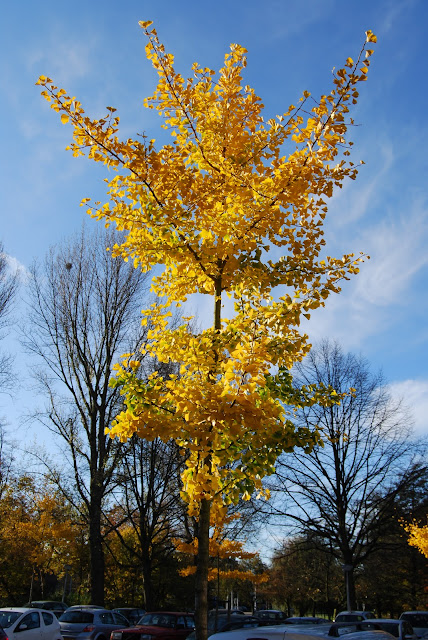Yesterday I made this chickpea soup with a black olive fougasse.
The rich and thick soup is a great meal for a Saturday night with a good piece of the bread and a glass of red wine accompanying.
Rustic and warming, it’s a pity that I don’t have a fire place. That would be perfect.
But, life is not, as am I.
Today we’re under a cloud all day, it’s chilly and humid. Not inviting to go out, everything is grey. Before I leave on my bike, brrr, I write this entry and find myself some warm but colorful clothes, to cheer myself up. I really have a problem with dull, grey Sundays. The best thing to do is stay in bed with a pot of tea and a load of books, magazines and papers. But I have a birthday to go to, that’s the nice part, it’s a 30 minute bike trip, that’s the bad part of it in this weather.
But ok, no more nagging, it is like it is, so here‘s the recipe, it’s enough for 10 people or days!
Chickpea parsnip soup (a big pan full)
350 g chickpeas, soak them in plenty of water, 1 night before or the quick way*
1 piece of kombu
2 bay leafs with a clove stuck in each one
6-10 cloves of garlic, chopped roughly
1 big onion, chopped roughly
6 tbsp of olive oil
1 parsnip, medium size, peeled and cut in small blocks
6 stalks of celery, cleaned and chopped
1 courgette, medium, roughly grated
1 tbsp cumin seeds
1 tbsp coriander seeds
1 full tsp smoked paprika powder
salt and black pepper, to season
fresh coriander leaved, last moment, garnish
harissa, for the heat lovers
When you didn’t have the time or forgot to soak your dried chickpeas, you can use cooked ones, but then take care of the seasoning as they contain salt already.
Soaking your own is easy, cheap and they stay a little tougher, which I like, they have more bite.
There is also a quick way to soak your pulses.
I happened to have forgotten to soak my chickpeas on Friday night, so I found them unsoaked the next morning in a bowl waiting for me.
The quick way is to put your chickpeas in a big casserole, fill it up with plenty of water, put in a piece of kombu, and bring it to the boil. Let it cook for 2-3 minutes, skim the surface if needed, put out the gas and with a lid on let it rest all day till your going to cook. A little earlier you put on the gas again and let the chickpeas cook for 1-2 hours, depending of the age of the chickpeas. The older they are, the longer the cooking time.
When the chickpeas are almost done you can start on the soup.
In a big soup casserole, 4-5 l, you heat the olive oil and put in the chopped onion and garlic, let it fry softly 4 minutes. Add the chopped parsnip and celery and let it sweat for 8 minutes with the lid on.
In the meantime you roast the cumin and coriander in a dry pan till you smell the fragrances and grind them in a mortar and add them to the vegetables in the casserole and mix everything well.
Add the grated courgette, the drained chickpeas with half of the cooking water. Take out the kombu and cut it fine and add to the soup. Put also the 2 bay leafs with the cloves in the soup.
Fill the casserole with enough water or vegetable stock till everything is well under water.
Season with salt and pepper or some vegetable bouillon cubes and bring it to the boil. Let it simmer for at least 1 hour, very softly. Taste and season if necessary.
With a stick blender blend the soup coarsely so that there will stay whole and crushed chickpeas and vegetables in it.
Add freshly chopped coriander and serve with harissa and a good flat bread (Recipe will follow this week!)
Kikkererwten pastinaaksoep(een grote pan vol, 10-12 pers)
350 g kikkererwten, een nacht geweekt en dan afgegoten, of gebruik de snelle methode*.
1 stukje kombu
2 laurierbladeren met een kruidnagel bestoken
6-10 knoflooktenen, grof gehakt
1 grote ui, grof gehakt
6 el olijfolie
1 pastinaak, geschild en in stukjes
6 stengels bleekselderij, schoongemaakt en in reepjes
1 courgette, grof geraspt
1 el komijnzaad
1 el korianderzaad
1 volle tl gerookt paprikapoeder
zout en zwarte peper, naar smaak
verse koriander, laatste moment
harissa, voor de pittig liefhebber
Als je geen tijd hebt of vergeten bent de kikkererwten te weken, kun je altijd gekookte gebruiken, pas dan wel op met zout gebruik.
Zelf je peulvruchten weken is makkelijk, goedkoop en ze blijven wat steviger, wat ik lekkerder vind.
Er is ook een snelle manier om te weken.
Ik was zelf ook vergeten de kikkererwten te weken en ze stonden gisterochtend op me te wachten, droog in een kom.
De snelle manier gaat als volgt: doe de kikkererwten in een ruime pan met volop water en een stukje kombu. Breng aan de kook en laat 2-3 minuten koken, schuim de oppervlakte af als dat nodig is. Zet het gas uit en laat ze met een deksel op de pan de verdere dag staan. Voordat je aan de soep begint, kook je dan eerst de kikkererwten 1-2 uur, afhankelijk van de leeftijd van de kikkererwten. Hoe ouder, hoe langer de kooktijd.
Als de kikkererwten bijna gaar zijn, begin je met de soep.
In een grote soeppan, 4-5 l, verwarm je de olijfolie en fruit hierin de ui en knoflook zachtjes 4 minuten. Voeg dan de blokjes pastinaak en schijfjes selderij toe en laat, met een deksel op de pan, alles 8 minuten zweten.
Ondertussen rooster je de komijn en koriander in een droge pan tot ze gaan geuren. Vijzel ze tot poeder en voeg ze dan toe aan de pan en roer goed door. Voeg ook de courgette toe, de kikkererwten en de helft van het kookwater. Snijd de kombu fijn en voeg ook aan de soep toe.
Doe de laurierblaadjes erbij, waar je een kruidnagel in hebt gestoken. Vul dan de pan met voldoende water zodat alles ruim onder water staat. Breng op smaak met zout en peper of wat groentebouillonblokjes en breng aan de kook. Laat het zeker 1 uur heel zachtjes koken tot alles zacht is. Proef en breng op smaak.
Met een staafmixer pureer je soep grof, zodat er nog hele stukken groentes en kikkererwten in blijven.
Serveer met de verse koriander en wat harissa, als je van pittig houdt. Het recept voor de zwarte olijven fougasse volgt deze week.




























